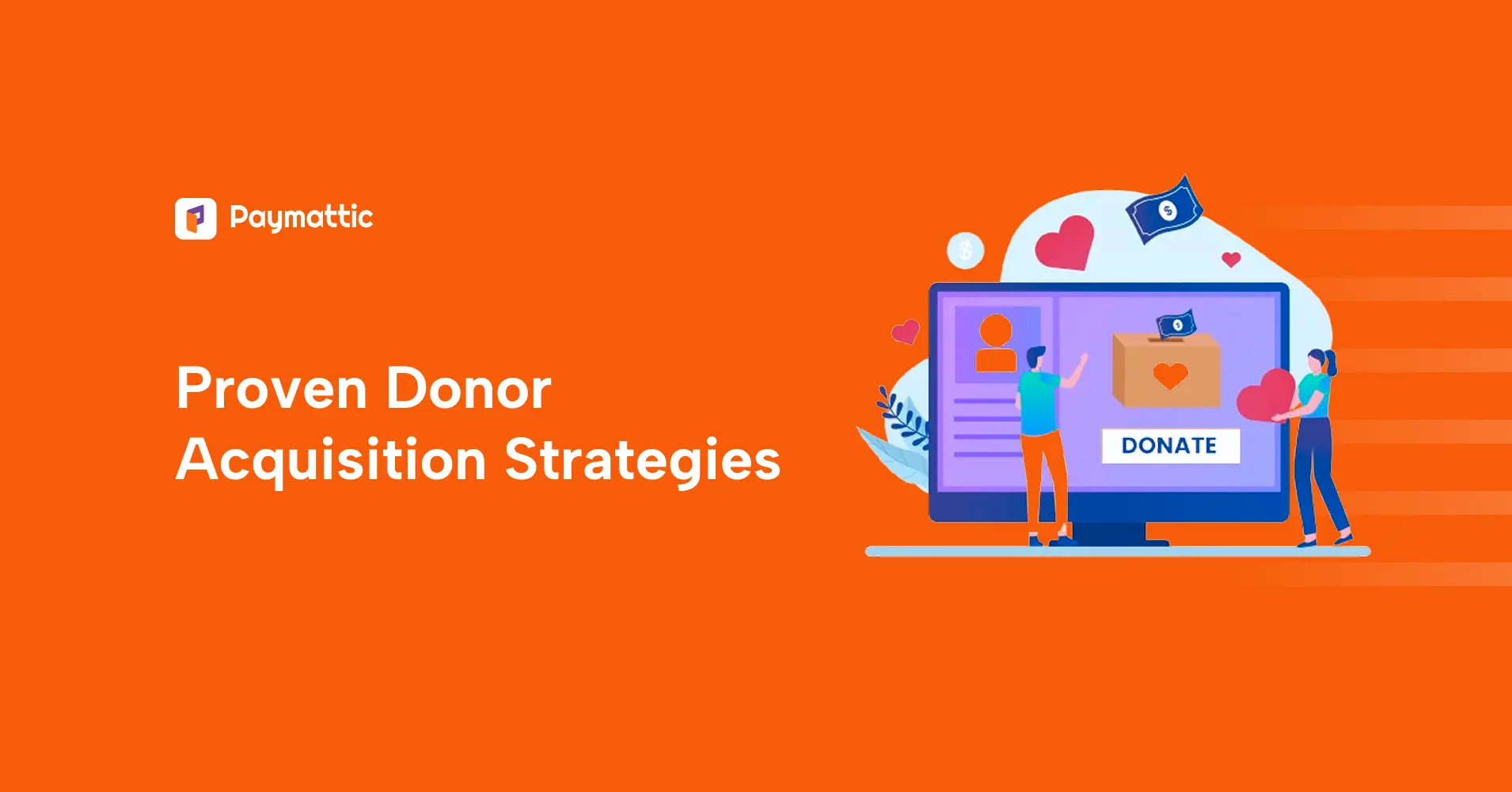
12 Min Read
5 Donor Acquisition Strategies Behind 550+ New Donors in 31 Days
Table of Content
Download Paymattic – it’s Free!
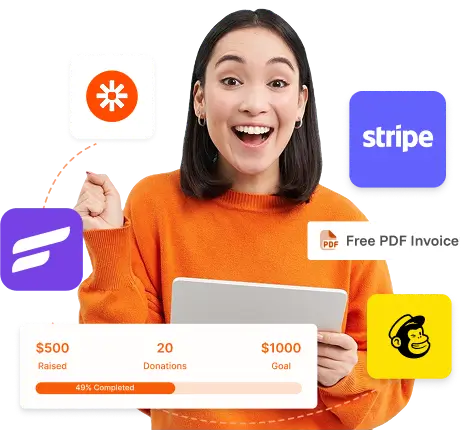
Subscribe To Get
WordPress Guides, Tips, and Tutorials
We will never spam you. We will only send you product updates and tips.
Acquiring new donors should always be a top priority for nonprofits of any size. Where recurring donors make your organization sustainable, new donors keep your mission growing.
Here’s the thing about donor acquisition: everyone’s talking about it, but few are actually showing you the receipts.
You’ve probably read dozens of articles promising “proven strategies to attract new donors” or “the ultimate donor acquisition strategies.” But where are the real results? Where’s the proof that these tactics actually work? Where’s the case study?
This is when my inner Sherlock kicks in, and before I write this article, I go looking for some real-life strategies for donor acquisition. Fortunately, I found a Kenyan nonprofit that gained 550+ new donors in just 31 days. Not 31 months. Not 31 weeks. Thirty-one days.
I dive deep into their campaign to try to find out how they achieved this. What was their plan of action? What I discovered wasn’t just impressive; it was completely replicable.
So, in this article, I’ll explain the top 5 donor acquisition strategies they used to achieve their goal, plus share additional tactics on how to attract new donors and measure your success.
No fluff, no theory, just real strategies that generated real results.
What is donor acquisition?
Donor acquisition is basically the way your nonprofit makes new friends.
It is about finding new people who might not have heard of your organization and convincing them to give you money. Sounds harsh when I put it like that, but that’s exactly what it is.
And when you’re doing life-changing work, there’s nothing wrong with it.
Donor acquisition is about expanding your circle, finding new people who care about what you care about, and giving them a chance to be part of your mission.
It’s not only about funds. Because new donors not only give you money to run your programs, but they also bring fresh energy, new perspectives, and new networks.
In short, donor acquisition is the process of identifying, attracting, and converting people into first-time donors for your nonprofit organization via marketing or networking.
5 Donor acquisition strategies behind 550+ new donors in 31 days
Let me tell you about the Sheepcare Community Centre, a Kenyan nonprofit that focuses on helping disadvantaged communities, particularly children, access quality education and healthcare.
During their GlobalGiving Accelerator campaign, they achieved something extraordinary.
In exactly 31 days, they attracted 551 new donors. That’s nearly 18 new supporters every single day. For a nonprofit that had been struggling with traditional fundraising methods, this was nothing short of revolutionary.
Luke Jakoya, Sheepcare’s founder and director, breaks down the approach into five strategic steps that any nonprofit can adapt. These are not complicated or expensive; they’re just incredibly smart and strategic.
Here are the five donor acquisition strategies for nonprofits that made it all possible:
Gain support from within your organization
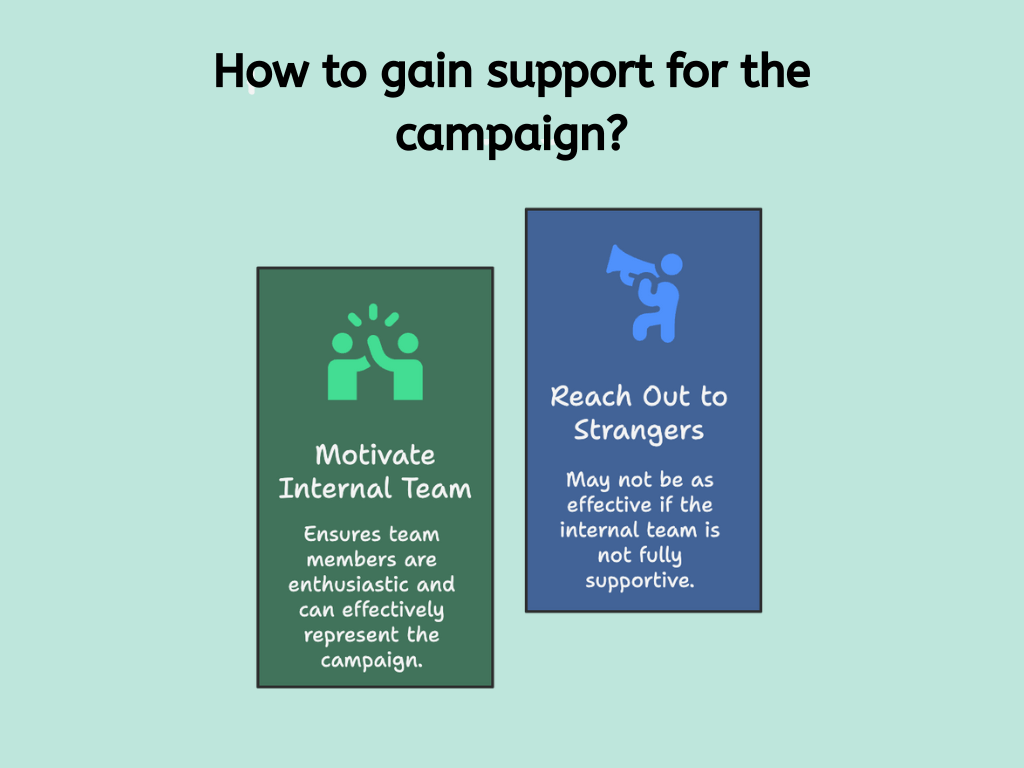
This might surprise you, but they didn’t start by reaching out to strangers. They started by motivating their own team about the campaign.
He explained in an interview that he realized if their staff and volunteers weren’t excited about their donor acquisition efforts, how could they expect anyone else to be?
So he briefed them on the crowdfunding goal they were trying to achieve. Also clarified why it mattered and what success would mean for everyone involved.
Once the team understood the goal, they shared the responsibility, and identifying potential donors became everyone’s mission.
This internal alignment is important because your team members are your first ambassadors. When they truly believe in the campaign, they can answer questions naturally, share personal stories about the impact, and convey genuine enthusiasm that’s impossible to fake.
The lesson here is that before focusing on attracting new donors from outside, make sure everyone inside your organization is ready to support your cause. Your staff, volunteers, and board members should be your first line of defense in gaining donors.
Create a list of potential donors
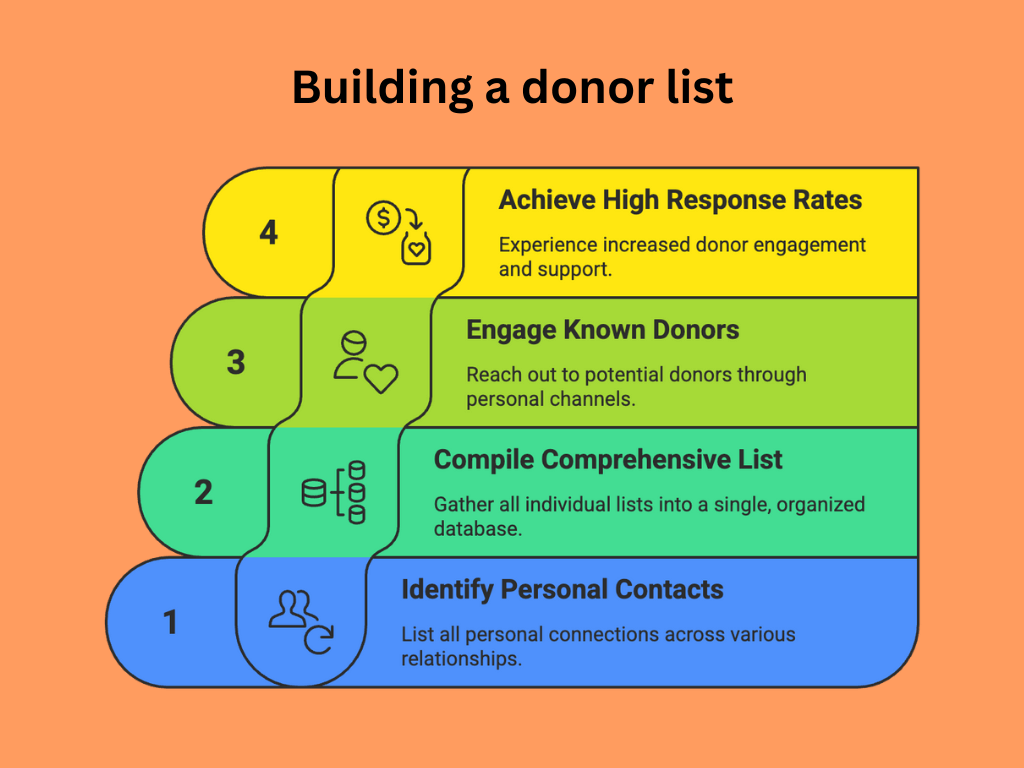
Here’s where most nonprofits make a massive mistake. They immediately think about reaching complete strangers instead of starting with the goldmine sitting right in front of them.
Sheepcare took a completely different approach, and it was brilliant.
They asked each person in their organization to make a list of people they knew personally. Not just their best friends; everyone.
The lists included close friends and relatives, neighbors, mentee/mentor relationships, acquaintances from church or social groups, former colleagues, social media connections, and anyone who had supported similar causes before.
This is how the collaborative approach created their first comprehensive list of potential donors, and the results were unbelievable.
When someone receives a donation request from a person they know and trust, they’re dramatically more likely to respond than to a generic fundraising email from an unknown organization
The math here is simple but powerful. If you have 10 people in your organization and each person knows 50 potential donors, you’ve just identified 500 prospects without spending a penny on advertising or lead generation services.
This systematic approach to building your donor prospect list is one of the most underutilized donor acquisition strategies for nonprofits, and it’s completely free.
Develop an outreach plan
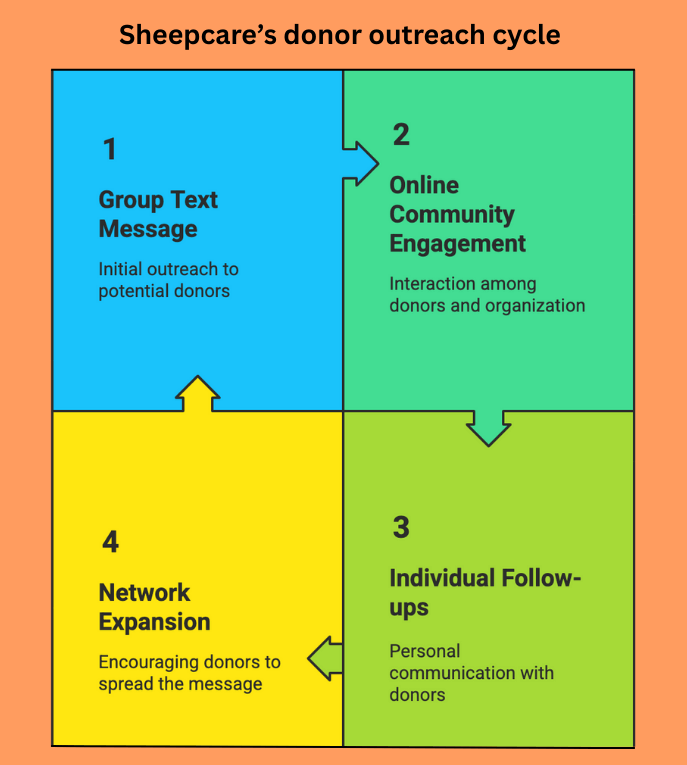
Having a list of potential donors is only the beginning. The magic happens in how you reach out to them.
Sheepcare’s outreach strategy for donor acquisition was both systematic and personal. They started with a group text message to all potential donors. The text gave a brief alert that explained the upcoming opportunity to help an underprivileged child.
This initial text created an online community where donors could interact with each other and the organization.
But they didn’t stop there. After the initial group outreach, they’re reaching out to each person in their network individually. To do this, they prioritized personal communication methods, with phone calls being favored over texts and texts being favored over emails.
They only used emails to contact previous fundraising supporters from outside Kenya.
Another crucial part of this donor acquisition strategy was that they asked each potential supporter to spread their message within their networks.
So they didn’t just try to broadcast their message; they created a structured approach that combines mass communication with personal touches. The initial group message created awareness and urgency, while the individual follow-ups provided the personal connection that drives action.
This could also be an effective part of your donor retention strategies.
Build a donor community
This strategy was probably the most innovative part of Luke’s approach, and it’s something that other nonprofits should execute.
Sheepcare created an active donor community through a WhatsApp group. After adding their initial donor base to the group chat, they’re requested to invite their own networks to the group. This organic growth was essential for expanding their donor base rapidly.
Whenever someone made a new donation, Luke and the team would post the person’s name in the group chat to thank them publicly. They also ask others in the group to thank them, too.
Donors loved seeing their names appreciated and celebrated. This approach motivated other members of the group to contribute as well. It’s basic human psychology.
You can also create communities on WhatsApp or Facebook or create events on social media where your potential donors can see the impact of their collective efforts and receive recognition from both peers.
If you’re wondering how to get new donors, this community-building approach is gold. That’s why it’s considered one of the best donor acquisition strategies. It turns one-time donors into active ambassadors for your cause.
If you don’t know how to thank your donors effectively, check out our how to write a thank you note guide with a free templates.
Share powerful messaging
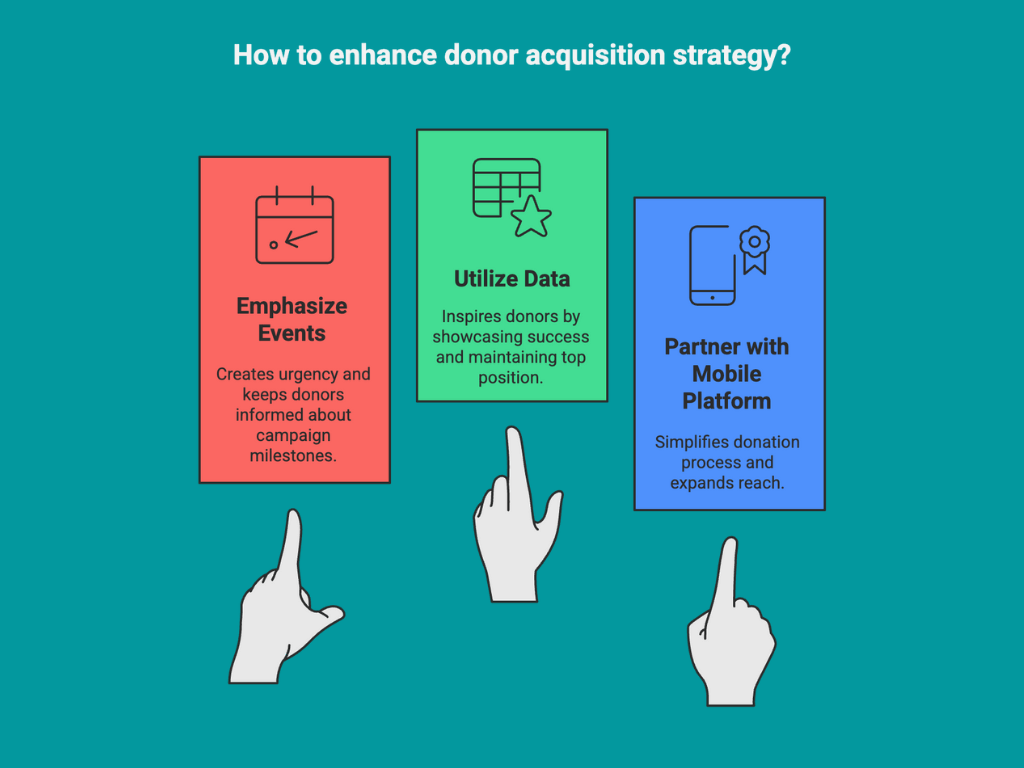
The final piece of Sheepcare’s donor acquisition strategy was their approach to messaging. They used three specific tactics that made their communications stand out:
First, they emphasized important events and created urgency by keeping donors informed about campaign milestones.
They informed the potential donors when the campaign started, provided regular updates on days remaining, and scheduled hourly content for Bonus Day and the final day of the campaign.
Second, they utilize available data to create compelling messages. When they noticed they were ranked #1 for the most number of unique donors on the Accelerator leaderboard, they took a screenshot and shared it with their community.
This positive, success-filled message inspired donors to continue giving to maintain their #1 position among 705 competitors. And this donor acquisition plan has worked like magic for them.
Lastly, they partnered up with a popular mobile giving platform in Kenya. Supporters could donate with just a phone and a minimum of 10 Kenyan Shillings.
It shows that effective donor acquisition isn’t only about taking donations from people; it’s about creating a narrative that makes them feel they’re part of you, and together, you’re working toward an important goal.
Luke didn’t focus solely on how to attract new donors; he was entirely dedicated to his donor acquisition plan and executing it effectively. He turned his contributors into ambassadors, and you can see the outcome.
Other top donor acquisition strategies for nonprofits
While Luke’s approach was remarkably successful, there are additional donor acquisition strategies that nonprofits can implement to expand their supporter base.
Peer-to-peer fundraising
Peer-to-peer fundraising is one of my favorite strategies to attract new donors because it’s like having an army of mini-fundraisers working for you.
It allows you to tap into a network that would have otherwise been inaccessible. Small nonprofits can double their donor base just by getting some passionate supporters to fundraise among their friends.
The conversion rates are incredible because people trust recommendations from friends more than any marketing campaign.
Corporate partnerships
They’re goldmines that most nonprofits completely overlook. I’m not talking about chasing big companies that donate to nonprofits (though that’s great if you can).
I’m talking about the local businesses in your community who are already looking for ways to give back. Many have employee giving programs or will sponsor events. The key is building genuine relationships, not just asking for money.
Donation request forms
Optimized donation forms are probably the most overlooked aspect of how to get new donors. The brutal truth is, you could have the most compelling story in the world, but if your donation process is confusing or lengthy, you’ll lose potential donors at the last step.
Nonprofits can increase their conversion rates by 40% just by simplifying their donation forms. Make sure your form loads quickly, works perfectly on mobile devices, offers multiple payment options (credit card, PayPal, Apple Pay), and has suggested donation amounts that make sense for your cause.
Remove unnecessary fields; you don’t need their life story to process a donation. And please, test your form regularly. I can’t tell you how many times I’ve tried to donate to organizations only to encounter broken forms or confusing processes.
Social media
If you’re not utilizing social media for fundraising, you’re missing huge opportunities to attract new donors.
I’m talking about consistent, authentic posting that tells your story and shows your impact. Share behind-the-scenes moments, volunteer spotlights, and beneficiary stories.
Use Instagram Stories to show your daily work, create Facebook Live Q&A sessions, and don’t forget about TikTok if you’re trying to reach younger donors.
Most importantly, when you’re posting on social media about your campaign, make sure your fundraising titles are catchy enough to grab people’s attention at first glance.
Community events
Events are honestly where the magic happens for donor acquisition. There’s something powerful about meeting people face-to-face and letting them experience your mission firsthand.
I remember attending a small animal rescue’s adoption event at a local park. I went just to pet some dogs but left as a monthly donor after hearing the volunteers share their stories and seeing the genuine care they provided to each animal.
This is why community events are considered among the effective strategies for donor acquisition.
The beauty of these donor acquisition strategies is that you don’t need to implement them all at once. Pick one or two that feel most natural for your organization and your community. Test them, measure what works, and then gradually expand your donor acquisition plan.
Subscribe Newsletter
Subscribe to our newsletter for updates, exclusive offers, and news you won’t miss!
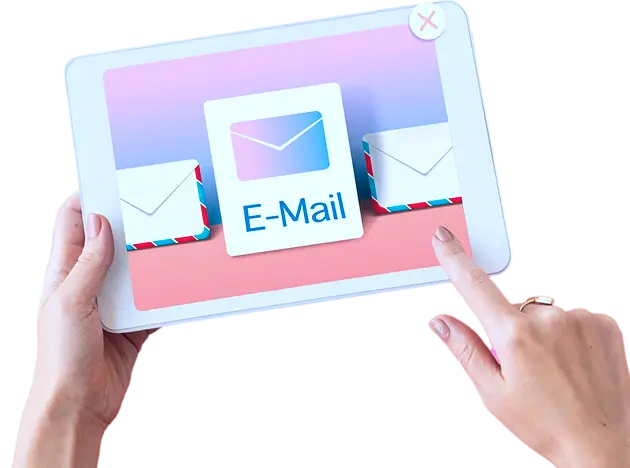
How to calculate donor acquisition rate?
You may think, why do you need to calculate the donor acquisition rate? It’s important to understand your donor acquisition rate to know the effectiveness of your donor acquisition strategies.
It’ll help you make data-driven decisions about where to invest your resources.
To calculate your donor acquisition rate, divide the number of new donors acquired during a specific period of time by the total number of donors during that same period, then multiply it by 100 to get a percentage.
Formula: (Number of first-time donors ÷ Total number of Donors) × 100 = Donor Acquisition Rate
For example, if 1,000 donors donate to your campaign and 50 of them made their first donation, then your donor acquisition rate would be 5%.
It’s important to track this rate across different channels and campaigns to understand which donor acquisition strategies are working and which are not.
If you ask what is a good donor acquisition rate, then there is no exact number to define this. It depends on the size of your nonprofit and the goal.
You should also calculate your donor acquisition cost, which is the total amount spent on acquisition efforts divided by the number of new donors gained.
This helps you understand the financial efficiency of your strategies and ensures you’re not spending more to acquire a donor than they’re likely to give.
Formula: (Total Acquisition Costs ÷ New Donors Acquired) = Donor Acquisition Cost
Wrapping up
Huge budget or fancy marketing tools are not important to attract new donors. Luke and his team at Sheepcare proved that with the right approach, you can achieve amazing results in just 31 days.
If you have a clear plan, a committed team, and the enthusiasm to try something different, you can also reach your goals. The five strategies they used in Sheepcare campaigns aren’t rocket science. They’re simple ideas that any nonprofit can use.
Start with one strategy that feels right for your organization. Test it, see what works, and then add more.
Join the thousands already enjoying Paymattic Pro!




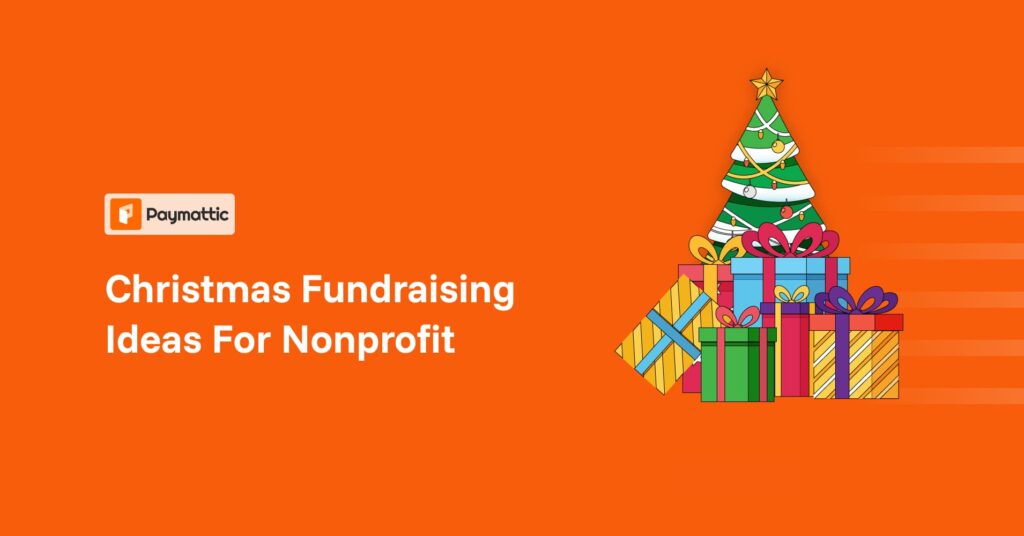
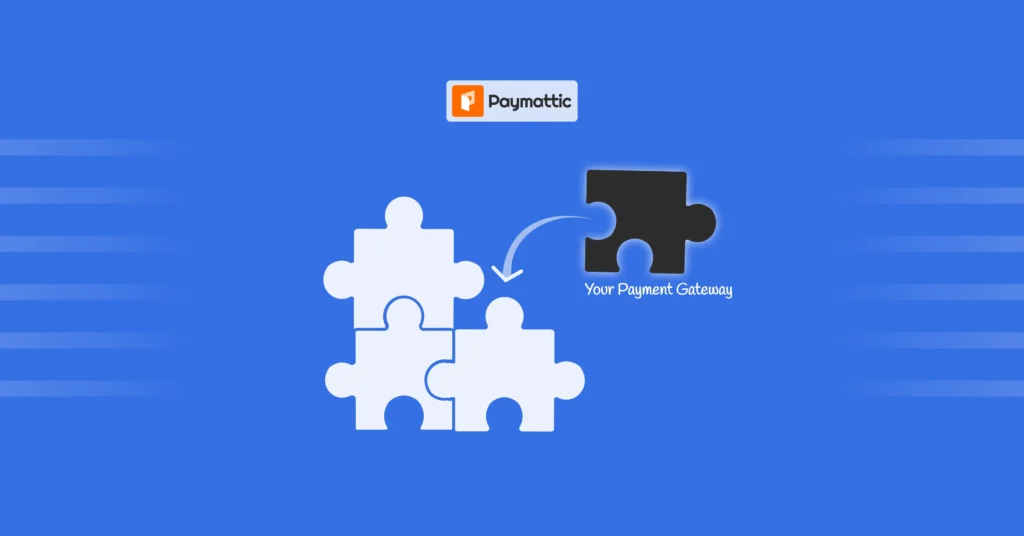
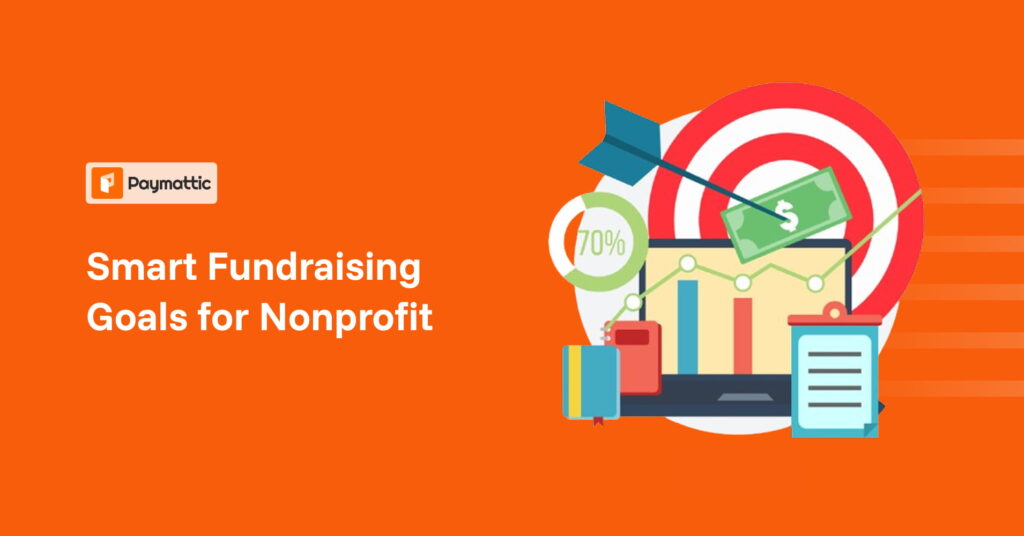
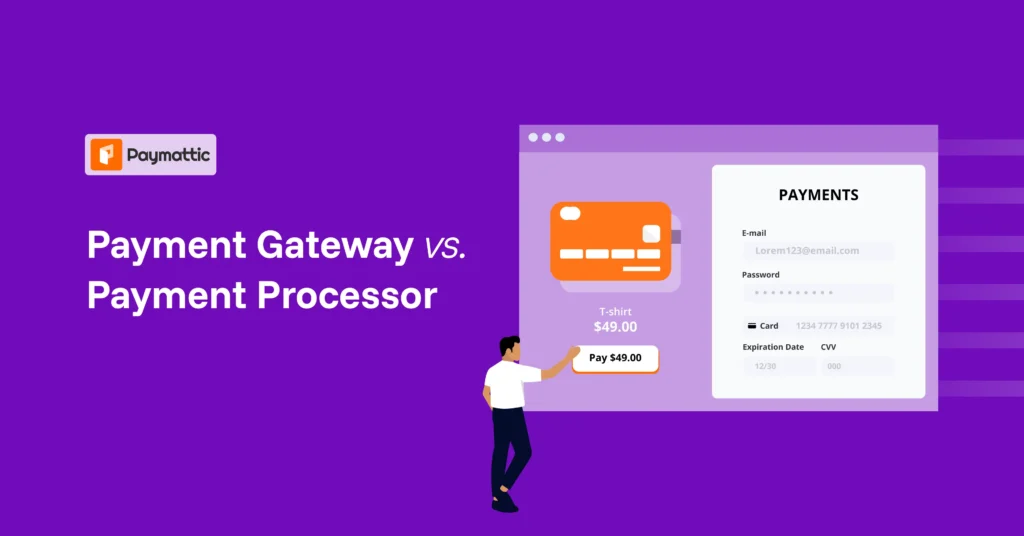
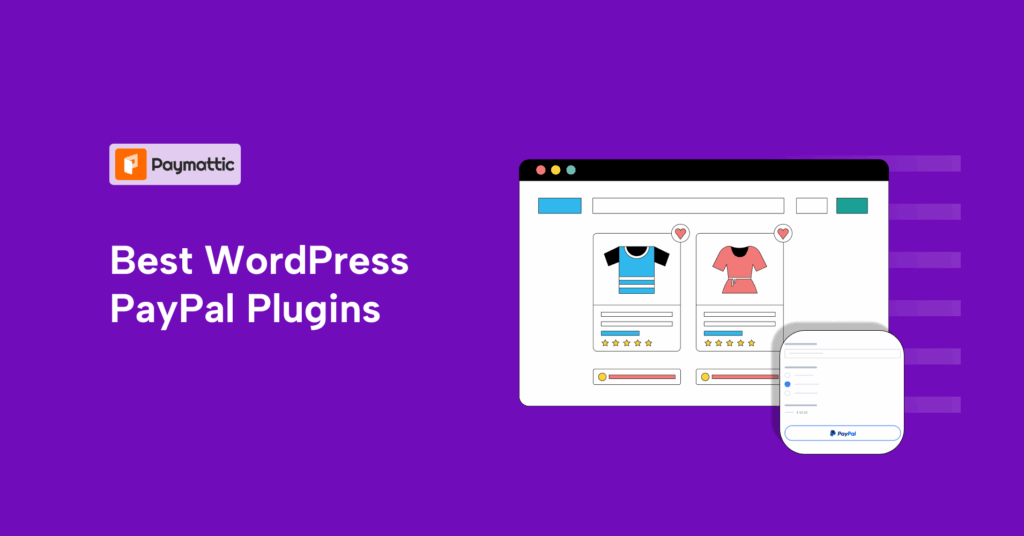
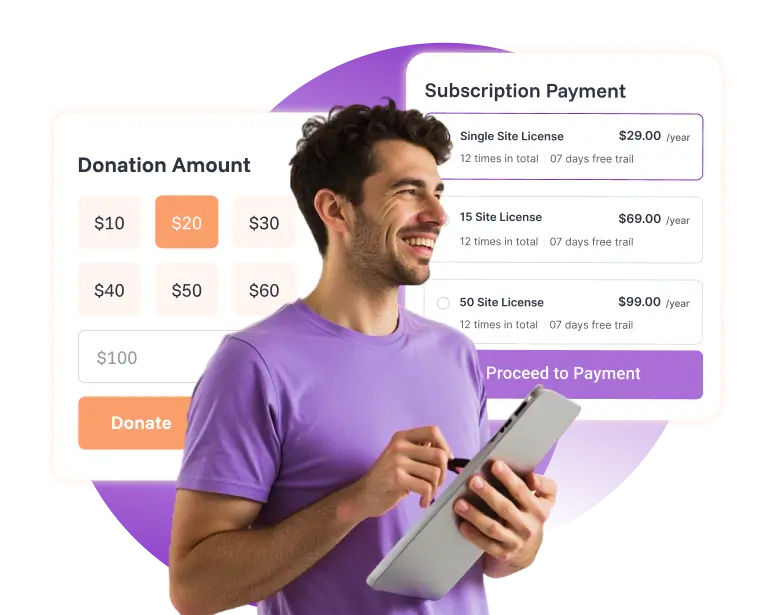
Leave a Reply